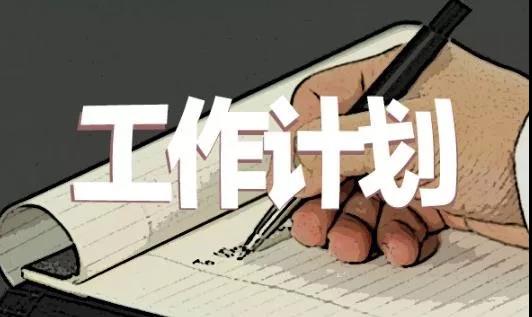微通道经皮肾镜碎石与输尿管软镜碎石治疗孤立肾肾下盏2~3,cm结石的比较
[摘要] 目的 比較微通道经皮肾镜取石术(MPCNL)和输尿管软镜碎石术(FURL)治疗孤立肾肾下盏2~3cm结石的效果。 方法 回顾性分析2013年4月~2016年2月深圳市宝安区中心医院治疗的孤立肾结石96例临床资料,根据治疗方法的不同分为MPCNL组(52例)和FURL组(44例),并分析比较两组的结石清除率、手术时间、术中出血量、住院时间、术后24 h血红蛋白下降值和术后24 h血清肌酐升高值、手术并发症、结石成分。 结果 MPCNL组一期结石清除率高于FURL组(P < 0.05),但两组总结石清除率比较,差异无统计学意义(P > 0.05);MPCNL组手术时间短于FURL组(P < 0.01),但术中出血量多于FURL组(P < 0.01),住院时间长于FURL组(P < 0.01);MPCNL组术后24 h血红蛋白下降值高于FURL组(P < 0.01),两组术后24 h血清肌酐升高值比较,差异无统计学意义(P > 0.05);MPCNL组与FURL组并发症发生率比较,差异有统计学意义(P < 0.05);两组结石成分比较,差异无统计学意义(P > 0.05)。 结论 治疗2~3 cm孤立肾肾下盏结石,MPCNL虽然一期结石清除率高于FURL,但FURL出血更少,住院时间更短,在一定程度上可以作为一种替代的治疗方式。
[关键词] 孤立肾;肾结石;经皮肾镜碎石取石术;输尿管软镜碎石术
[中图分类号] R692.4 [文献标识码] A [文章编号] 1673-7210(2018)02(c)-0058-05
Comparison of the treatment of minimally invasive percutaneous nephro?鄄lithotomy and flexible ureteroscope lithotripsy for solitary kidney subrenal calyx calculus 2-3 cm
ZHANG Yu1,2 JIANG Youtao3 LI Jiuzhi3 CHEN Lezhong1 WU Yue2
1.Department of Urology, Baoan Central Hospital of Shenzhen, Guangdong Province, Shenzhen 518102, China; 2.Department of Urology, the Sixth Affiliated Hospital of XinJiang Medical University, Xinjiang Uygur Autonomous Region, Urumqi 830000, China; 3. People′s Hospital of XinJiang Uygur Autonomous Region, Urumqi, Xinjiang Uygur Autonomous Region, Urumqi 830001, China
[Abstract] Objective To compare the effects of minimally invasive percutaneous nephrolithotomy (MPCNL) and flexible ureteroscope lithotripsy (FURL) for the treatment of solitary kidney subrenal calyx calculus 2-3 cm. Methods The clinical data of 96 cases of isolated kidney stone and treated in Baoan Central Hospital of Shenzhen from April 2013 to February 2017 were analyzed retrospectively. According to the different treatment methods, they were divided into MPCNL group (52 cases) and FURL group (44 cases), and the stone clearance rate, operation time, intraoperative bleeding, length of hospital stay, 24 hours postoperatively hemoglobin drop value and 24 hours postoperatively serum creatinine elevation value, surgical complications, and calculi composition were compared between the two groups. Results The phase 1 calculi clearance rate of MPCNL group was higher than that of FURL group (P < 0.05), but the total stone clearance rate of both groups were compared, the difference was not statistically significant (P > 0.05). The operation time of MPCNL group was shorter than that of FURL group (P < 0.01), but the intraoperative bleeding of MPCNL group higher than that of FURL group (P < 0.01), the length of hospital stay of MPCNL group was longer than that of FURL group (P < 0.01). The 24 hours postoperatively hemoglobin drop value of MPCNL group was higher than that of FURL group (P < 0.01), the 24 hours postoperativedy serum creatinine elevation value of both groups were compared, the difference was not statistically significant (P > 0.05). The surgical complications of MPCNL group and FURL group were compared, the difference was not statistically significant (P < 0.05). The calculi composition of both groups were compared, the difference was not statistically significant (P > 0.05). Conclusion In the treatment of solitary kidney subrenal calyx calculus 2-3 cm, although the phase 1 calculi clearance rate of MPCNL is higher than FURL, FURL is less bleeding, and the length of hospital stay is shorter, which could be used as an alternative treatment to some extent.
上一篇:春意盎然赏花去
下一篇:没食子提取物体内外抗炎作用研究
最新推荐
- 1政府及行政事业单位管理会计应用问题研究
- 2高等学校债务风险管理研究
- 3基于平行文本比较模式的准技术词汇翻译探讨
- 4核心素养背景下的初中体育教学思考
- 5低压低产气井排水采气工艺技术分析
- 6“123”模式推进党组织领导的校长负责制
- 7孩子在家有说有笑,为何一出门就一言不发?
- 8肥厚型心肌病家系中MYBPC3-D1149fs*40新发突变的基因型及临床表型研究
- 9液压调速器AMESim动态仿真与参数优化
- 10基于经筋理论探讨活血定痛液定向透药对膝骨性关节炎患者及膝关节功能的影响
- 11文化生产还是文化再生产?——“学一代”与“学二代”的教育冲突与反思
- 12食物链
- 13难写字
- 14基于TPACK框架的,大学英语智慧教学评价体系探究
- 15跟着金庸的武侠小说,学习活用通感修辞
- 16新课改下高中英语教学中培养学生跨文化交际能力的策略
- 17封二:·科学小达人·
- 18中、蒙医文化融入医学通识英语课程教学的探索与思考
- 19树叶
- 20喵,一起藏猫猫吧
- 21克鲁普斯卡雅学前劳动教育思想及其启示
- 22难忘的体验
- 23凭空消失的10天
- 24冰雪城奇遇
- 25有点可爱有点“坏”
- 26高考地理试题体现“交通强国战略”的分析及教学启示
- 27在探秘自然中走进生活
- 28太,太
猜你喜欢
- 1“学习二十大永远跟党走奋进新征程”主题演讲比赛演讲稿10篇(全文)
- 22023年度党的路线方针政策10篇(2023年)
- 3组词造句24篇(完整)
- 4最新工程居间合同诈骗(十五篇)
- 5教师师风师德总结依法执教(19篇)
- 6组织开展家庭教育促进法宣传活动简报4篇(2023年)
- 7城管年度考核表7篇【精选推荐】
- 8职工工会申请书20篇
- 9入党谈话内容及注意事项13篇(完整)
- 10江西大山尾矿区铌钽矿地质特征及找矿标志研究
- 11试用期转正意见和建议4篇
- 12《民法典》概括条款的识别标准与类型构造
- 13高校原创红色话剧的审美创新——以长沙学院《日出湘江》为例
- 14最新七年级下册道德与法治教学计划(3篇)
- 15医院服务效能提升培训学习心得体会4篇
- 16执行政治纪律和政治规规矩方面3篇【优秀范文】
- 17会计职业道德风险及防范措施
- 18业主大会书面征求意见表决书4篇(完整文档)
- 192023年度村环境卫生整治活动简报8篇(范文推荐)
- 202023年度贯彻落实八项规定15篇
- 212023党员教师民主生活会批评与自我批评优秀3篇
- 22自立自强的议论文7篇
- 232023年大学试卷分析改进措施13篇
- 24不同类型钾肥对烤烟上部叶钾含量与碳氮代谢及品质的影响



